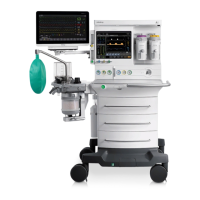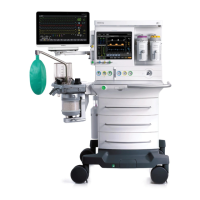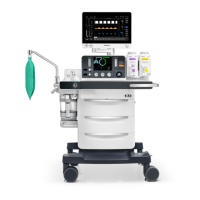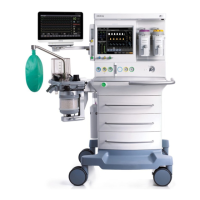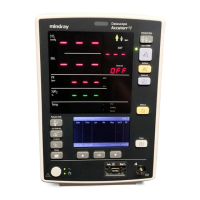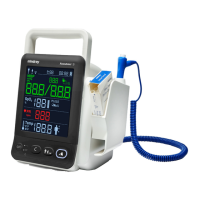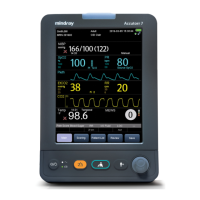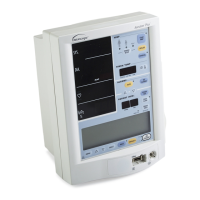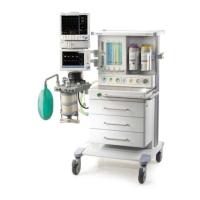Operator’s Manual of Anesthesia System 6 - 13
Operations Set Ventilation
6.6.8 Set Continuous Positive Airway Pressure/Pressure Support
Ventilation (CPAP/PS)
In the Pressure Support (PS) mode (when ΔPsupp is not 0 cmH
2
O, PS is displayed in the current
ventilation mode area), the equipment provides support to the patient’s effort at a preset inspiratory
pressure level. Inspiration is triggered and cycled by patient’s effort.
In the Continuous Positive Airway Pressure (CPAP) mode (when ΔPsupp is 0 cmH
2
O, CPAP is displayed
in the current ventilation mode area), the system maintains the airway pressure at the user-defined
positive pressure level throughout the ventilation cycle. The patient breathes spontaneously and
determines his own breathing frequency, timing and tidal volume.
The user can set the F-Trig (or P-Trig), ΔPapnea, PEEP, Allowed Min RR, and Tslope. If the Min RR
(minimum respiratory rate) is exceeded, and there's no spontaneous breathing or spontaneous
breathing is too weak to reach F-Trig (or P-Trig), the equipment will give an Apnea Ventilation breath
to assure ventilation is occurring.
Figure 6-9 Continuous positive airway pressure tab
Figure 6-10 Pressure support tab
Set CPAP/PS Mode:
1. Select the CPAP/PS tab on the Main Screen.
2. Select the parameter soft key and assign an appropriate value on the pop-up screen.
3. Check that all CPAP/PS parameters are set appropriately.
4. Select the [Set Mode] soft key to confirm the settings.
CPAP/PS parameters:
• ΔPsupp: support pressure (the ventilation mode is CPAP when ΔPsupp=0cmH
2
O)
• Tslope: rise time
• PEEP: positive end-expiratory pressure
• F-Trig/P-Trig: flow trigger level/pressure trigger level
• Exp%: expiration trigger level
• Min RR: minimum respiratory rate, applies to apnea backup breaths only
• ΔPapnea: apnea pressure
• Apnea Ti: apnea inspiration time
NOTE: Before activating a new automatic ventilation mode, ensure that all
related parameters are set appropriately.

